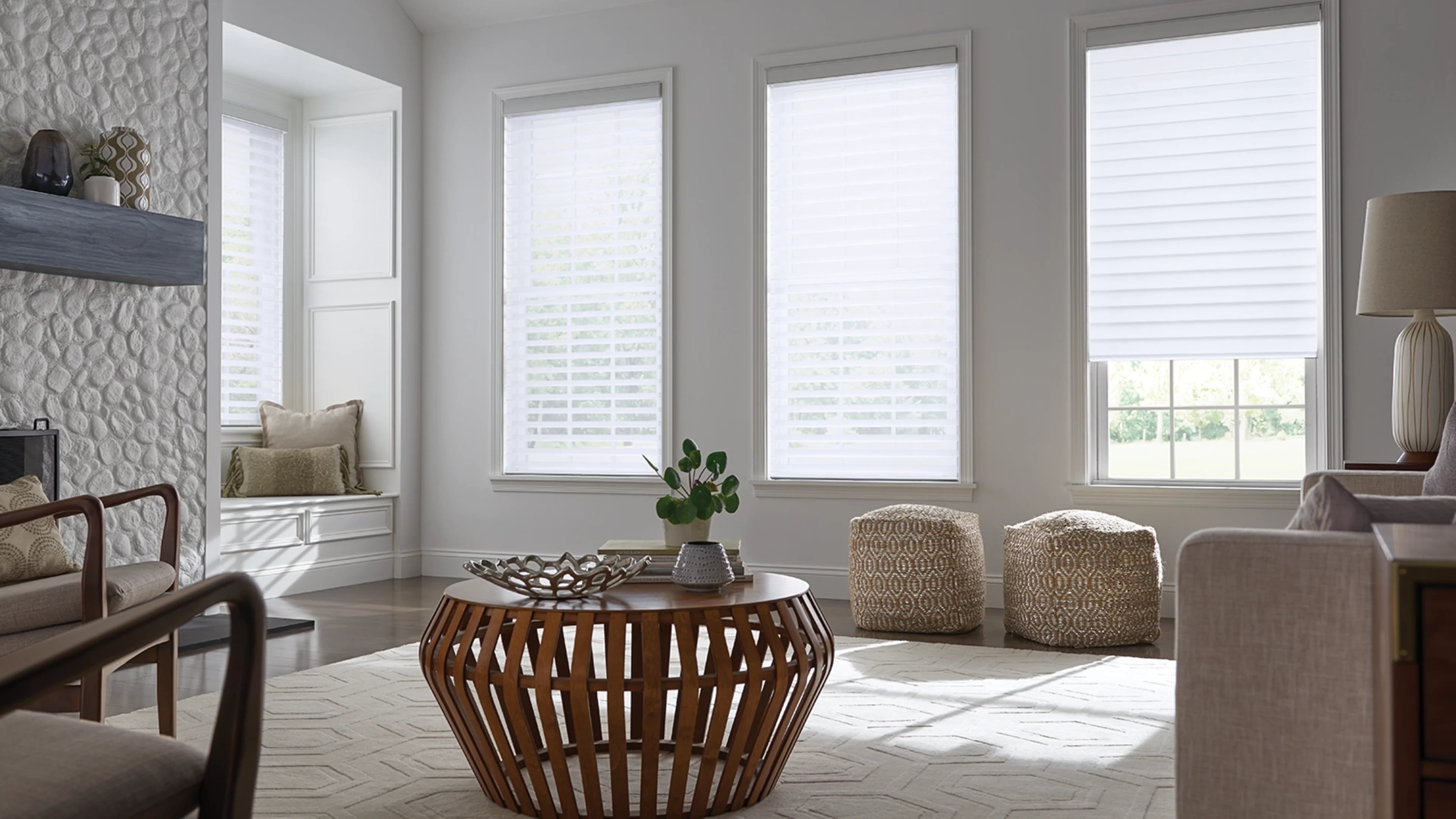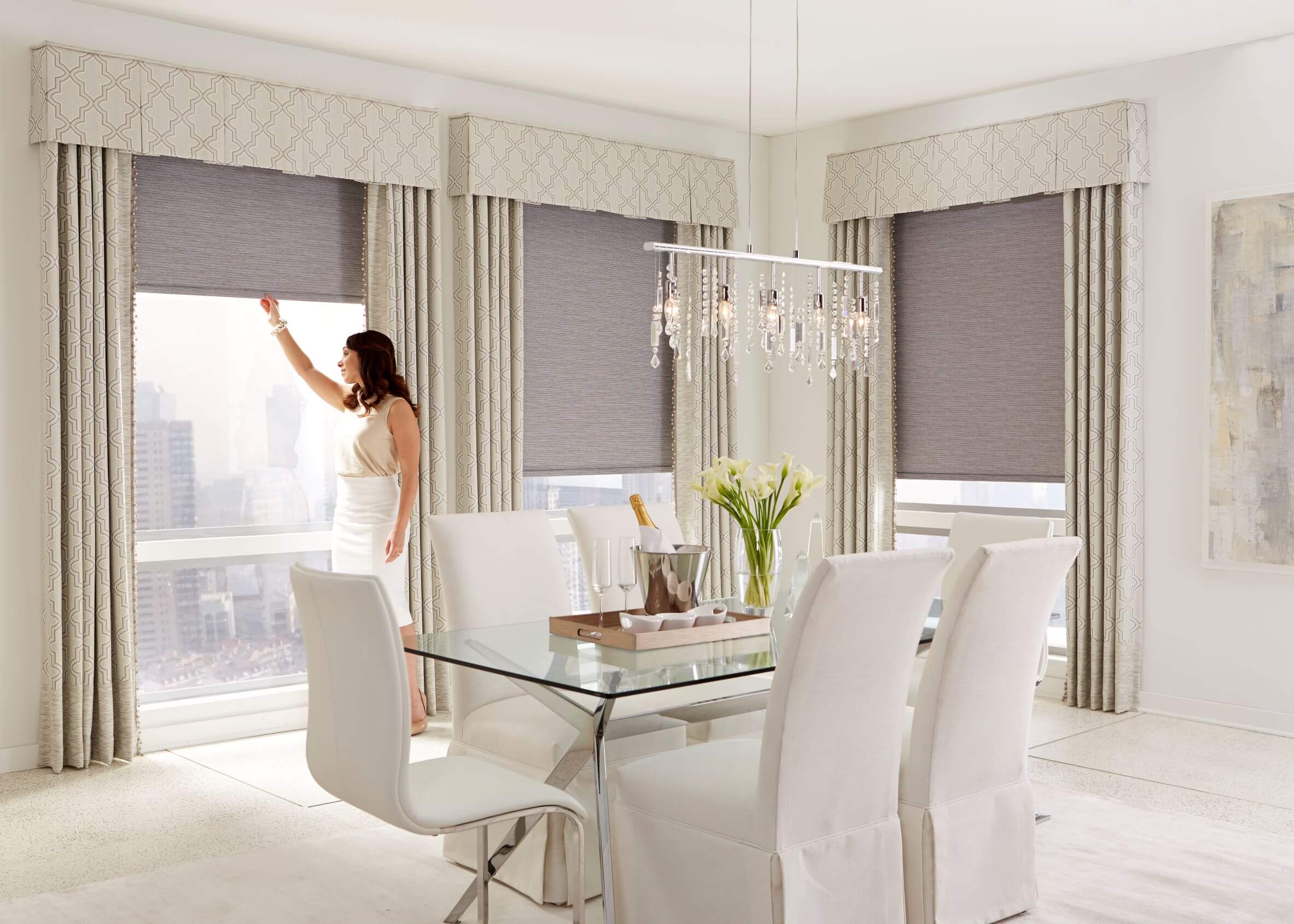The Ultimate Overview to Blinds: Kinds, Advantages, and Picking the Right Suitable For You
The world of home window therapies is vast and differed. Blinds come in numerous designs, each offering unique benefits for different setups. Recognizing these options is important for making informed choices. Additionally, variables like product option and room performance play a substantial duty. As one considers the perfect equilibrium in between looks and usefulness, the subtleties of determining and keeping blinds additionally become essential components. What should one focus on when picking the suitable window option?
Sorts of Blinds: An Extensive Introduction
Blinds work as both visual and practical components in indoor style, providing various alternatives to suit diverse choices and demands. Among one of the most preferred types are Venetian blinds, defined by horizontal slats that can be changed for light control and privacy. Roller blinds, understood for their simplicity and versatility, can be found in an array of materials and patterns, making them suitable for contemporary and standard settings. Vertical blinds, usually made use of for bigger home windows or moving doors, enable for easy adjustment and are typically made from textile or vinyl.
Roman blinds, with their elegant folds up, add a touch of refinement to any room, while cellular shades offer insulation and energy effectiveness. Additionally, bamboo blinds use a natural, environment-friendly alternative, infusing spaces with heat. Each kind has special features and designs, making certain home owners can locate the perfect suitable for their particular design and functional demands.
Advantages of Putting Up Blinds in Your Home
The setup of blinds in a home uses a number of substantial benefits. They offer enhanced privacy control, allowing home owners to control presence from the outside. In addition, blinds add to energy efficiency by helping to take care of indoor temperatures, lowering the dependence on home heating and cooling systems.
Boosted Privacy Control
When property owners seek to improve their space, setting up blinds offers a considerable advantage in personal privacy control. Blinds provide a flexible solution for controling visibility from both the exterior and interior of the home. By changing the slats or elevating the blinds, people can conveniently handle the quantity of light getting in while all at once blocking the view from outside. This adaptability enables property owners to develop a comfortable ambience without compromising natural light. Additionally, numerous styles and materials are available, guaranteeing that property owners can choose alternatives that effortlessly blend with their design while boosting privacy. Ultimately, the setup of blinds works as an efficient methods to guard personal area, encouraging leisure and tranquility of mind within the home setting.
Energy Efficiency Improvement
Installing blinds not just improves personal privacy however also significantly adds to energy performance in the home. By managing all-natural light and reducing warmth transfer, blinds can assist preserve a constant interior temperature. During warmer months, shutting blinds can block out too much sunshine, consequently lowering the reliance on a/c. Alternatively, in cooler months, they can give insulation by trapping warmth, minimizing heating costs. Furthermore, energy-efficient blinds, such as mobile shades, are made particularly to lessen energy loss. By purchasing top quality blinds, property owners can produce a more comfortable living setting while also lowering energy expenses. Ultimately, the installation of blinds works as a functional remedy for those seeking to improve both convenience and power efficiency in their homes.
How to Pick the Right Blinds for each and every Area
Exactly how can one identify one of the most suitable blinds for each room in a home? The option process begins with examining the space's objective and atmosphere. In living locations, versatile blinds that allow light control while making sure personal privacy are perfect. In bed rooms, power outage blinds can boost sleep top quality by obstructing out external light.
Kitchens and washrooms require moisture-resistant choices to withstand moisture, making plastic or fake wood blinds ideal selections. Furthermore, the wanted visual plays an important role; collaborating blinds with the room's style improves the general setting.
Think about the amount of all-natural light each room receives; lighter blinds may be better for dark areas, while darker alternatives can include warmth to sunlit spaces. Ultimately, understanding specific needs and choices for performance and design will certainly assist homeowners in making informed choices customized to each area's special needs.
Product Options: Timber, Plastic, Textile, and A lot more

Timber Blinds Conveniences
Wood blinds are a prominent selection among house owners seeking a blend of aesthetics and functionality. One substantial advantage of timber blinds is their all-natural appeal, providing a warm and inviting look that boosts any kind of indoor style. They are available in different coatings and shades, permitting for personalization to match personal style. Furthermore, wood blinds give excellent light control and privacy, as their slats can be quickly gotten used to filter sunlight while keeping seclusion. Their sturdiness is another benefit; with correct treatment, wood blinds can last for several years without losing their charm (Phoenix blinds repair). Furthermore, they have shielding properties, helping to control interior temperatures and potentially lowering power prices. Overall, timber blinds combine elegance and practicality, making them anonymous a suitable selection for numerous houses
Plastic Toughness Features
Plastic blinds attract attention for their exceptional resilience, making them a practical choice for numerous settings. These blinds are resistant to moisture, making them ideal for locations such as cooking areas and shower rooms where moisture can be a concern. Unlike wood, plastic does not warp, crack, or fade under sunlight, ensuring resilient performance and marginal upkeep. Additionally, they are available in a variety of designs and colors, enabling property owners to personalize their look without compromising resilience. Plastic blinds are also very easy to tidy; an easy clean with a damp towel is typically adequate to keep them looking fresh. In general, their durability and low upkeep make vinyl a preferred option among home owners looking for both functionality and visual charm.

Material Options Introduction
Blinds can be found in a variety of textile options that deal with various aesthetic and practical demands. Typical products include plastic, timber, and material, each offering one-of-a-kind advantages. Wood blinds give a timeless, warm visual and outstanding insulation but require upkeep to avoid warping. Vinyl blinds are moisture-resistant and sturdy, making them suitable for high-humidity areas like shower rooms and cooking areas. Fabric blinds, available in various shades and patterns, offer convenience and softness, enhancing home decoration while giving varying levels of light filtration. Furthermore, options like faux wood use the appearance of all-natural timber with included longevity. When selecting blinds, it is important to assess the certain demands of each space to guarantee peak performance and style.
Determining and Setting Up Blinds: Tips for Success
Although measuring and mounting blinds might seem straightforward, cautious interest to detail is essential for accomplishing a best fit. It is important to measure the window framework precisely, noting both the size and height. For within places, subtract a percentage from the size to guarantee a tidy fit, while outdoors places must extend past the structure for much better light control and looks. Using a steel measuring tape is suggested for precision.
When mounting, gather all needed devices, such as a level, drill, and screws. Following the supplier's directions is important to ensure correct installment. It is recommended to pre-drill holes to protect against harming the brackets. Furthermore, having a second person can make the process smoother, particularly when raising heavier blinds. Finally, after installment, test the blinds to confirm they run efficiently and readjust as essential for optimum performance.
Maintenance and Take Care Of Long-Lasting Blinds
Appropriate maintenance and care can significantly extend the life expectancy of window coverings. Routine cleaning is vital; using a soft towel or a microfiber duster can properly look at more info remove dust without scratching surface areas. For deeper cleansing, a gentle service of soap and water is recommended, used with a soft sponge, assuring that no moisture leaks right into the systems.
For textile blinds, place cleansing is a good idea, while wood blinds need to be treated with a wood-safe cleaner to preserve their coating. Stay clear of revealing callous too much dampness, warmth, or straight sunlight, which can cause bending or fading.
Additionally, routine examination of devices and cords can avoid deterioration. It's important to adhere to manufacturer standards for certain materials, as various blinds may have unique treatment needs. By embracing these easy maintenance practices, homeowners can assure their blinds continue to be practical and cosmetically pleasing for many years to find.
Regularly Asked Concerns
Can Blinds Aid Reduce Power Prices in My Home?
Blinds can effectively reduce power prices in a home by giving insulation, blocking warmth during summertime, and keeping warmth in wintertime. Their capability to regulate light and air panel blinds circulation boosts energy performance throughout the year.
Are There Child-Safe Options for Blinds?
Yes, there are child-safe alternatives for blinds. These include cordless layouts, retracting cords, and safety and security devices that eliminate dangling cables, ensuring a protected atmosphere for kids while maintaining capability and visual allure in homes.

Exactly How Do Blinds Contrast to Curtains or Tones?
Blinds normally offer much more specific light control and area efficiency than curtains or tones. Phoenix curtains. They are usually less complicated to cleanse and maintain, while curtains offer a softer visual, and shades can use varying insulation benefits
Can I Personalize the Color and Style of My Blinds?
Yes, blinds can be tailored in both shade and style. Different makers provide a vast array of choices, allowing customers to select products, patterns, and hues that suit their personal visual and home decoration.
What Is the Typical Life Expectancy of Various Sorts Of Blinds?
The typical life expectancy of blinds differs: wood blinds last 5-10 years, artificial wood 7-10 years, aluminum 5-10 years, and fabric shades around 5 years, depending upon exposure, use, and upkeep to sunlight.
Shower rooms and kitchen areas require moisture-resistant choices to stand up to moisture, making plastic or synthetic wood blinds suitable choices. Wood blinds use all-natural appeal and warmth, while vinyl provides durability and convenience of upkeep. One considerable advantage of wood blinds is their natural appeal, providing a warm and welcoming look that improves any indoor style. Additionally, wood blinds supply exceptional light control and privacy, as their slats can be quickly adjusted to filter sunshine while preserving seclusion. For material blinds, place cleansing is a good idea, while wood blinds need to be treated with a wood-safe cleaner to keep their surface.